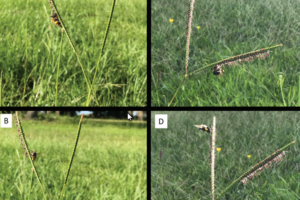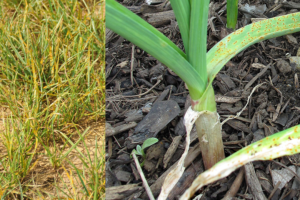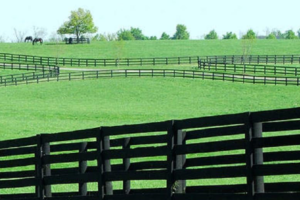
Introduction
Definition and Importance of Sustainable Management Practices for Urban Green Spaces
When we talk about ‘sustainable management practices for urban green spaces,’ we’re talking about ways to take care of parks, gardens, and other green areas in cities that are good for both people and the planet. These practices aim to keep our green spaces healthy and beautiful while supporting the environment.
For example, sustainable management practices include using less water, reducing the use of harmful chemicals, or planting a variety of plants to support local wildlife. These practices are essential because they help us make the most of our green spaces, providing places for people to relax and enjoy nature while supporting a healthy environment.
Brief Overview of the Italian Case Study
This article talks about a study in Italy examining how these sustainable management practices can be used in real life. The researchers focused on Ancona, a beautiful coastal city with many green spaces.
They wanted to see how different ways of managing these spaces could affect things like how much water they use, how many different types of plants and animals they support, and how much they contribute to the city’s overall health. The results of this study give us some fascinating insights into how we can better manage our urban green spaces.
Understanding Green Infrastructure and Ecosystem Services
Explanation of Green Infrastructure (GI) and Its Role in Urban Planning
‘Green infrastructure’ is a term we use to talk about all the different parts of a city that are green or natural. This includes parks, gardens, trees along the streets and even green roofs or walls covered in plants. Green infrastructure is critical in cities because it provides a bit of nature in an otherwise built-up area.
In urban planning, green infrastructure plays a significant role. It helps to make cities more pleasant places to live by providing spaces for people to relax, play, and connect with nature. But it also has other benefits, like helping clean the air, reducing flooding, and providing wildlife homes. By planning and managing our green infrastructure well, we can make our cities healthier, happier, and more sustainable places to live.
Discussion on Ecosystem Services (ES) and Their Integration into Spatial Planning Models
‘Ecosystem services’ is another term that may sound complicated, but it’s pretty simple. It’s just a way of talking about everything nature does for us. For example, trees provide a habitat for birds (that’s a habitat service), they help to clean the air (that’s a regulating service), and they can also make a place look beautiful (that’s a cultural service).
When planning our cities, thinking about these ecosystem services is essential. Integrating them into our planning models ensures we’re maximizing what nature offers. This might mean planting more trees to clean the air, creating wetlands to reduce flooding, or designing parks to support various plants and animals. By thinking about ecosystem services, we can create cities that are great places to live and support a healthy and diverse environment.
The Italian Context: Challenges and Opportunities
The Current State of GI Planning in Italy
Let’s take a look at the situation in Italy. Like many countries, Italy is working hard to improve how it plans and manages its green infrastructure. This means considering where to create new green spaces, how to take care of existing ones, and how to ensure these spaces provide as many benefits as possible.
However, this can be challenging. There are many things to consider, from the types of plants to use, how to maintain the spaces, and how to balance the needs of people and wildlife. It’s a big job but also an important one. By improving how it manages its green infrastructure, Italy can create better cities for its people and a healthier environment for everyone.
Limitations of Traditional Land-Use Planning Models and the Need for a Shift Toward a Performance-Based Approach
One of the challenges that Italy and many other countries face is that traditional land use planning methods are only sometimes suited to managing green infrastructure. These models often focus on things like how land is divided up and used rather than how it performs in terms of providing ecosystem services.
This is where a shift towards a performance-based approach can be beneficial. Instead of just thinking about how land is used, a performance-based approach also considers how well it’s providing ecosystem services. For example, instead of planning where to put a park, a performance-based approach would also consider how well that park is likely to clean the air, reduce flooding, or support wildlife.
By shifting towards this approach, Italy, and other countries, can ensure they’re getting the most out of their green infrastructure. This can help create pleasant cities and support a healthy and diverse environment.
Case Study: The City of Ancona
City of Ancona and Its Urban Landscape
Let’s take a closer look at the city of Ancona, which is the focus of this study. Ancona is a beautiful city on the coast of Italy. Like many cities, it has a mix of built-up areas, like buildings and roads, and green spaces, like parks and gardens.
These green spaces are an essential part of the city. They provide places for people to relax and enjoy nature and many benefits, like cleaning the air and providing homes for wildlife. But sustainably managing these spaces can be a challenge. That’s where this study comes in.
Methodology Used to Evaluate the Quantity and Quality of GI in Ancona and Classification of Urban Green Spaces in Ancona
In this study, the researchers wanted to learn more about Ancona’s green spaces. They wanted to know how many green spaces there were and how good these spaces were at providing ecosystem services.
To do this, they used a variety of methods. They looked at maps and aerial photos to identify green spaces and visited them to see what plants were growing there, how well they were maintained, and how people used them. They also examined how much water the spaces used and how much carbon they stored.
Based on this information, they could classify the green spaces in Ancona into different types, like parks, gardens, or green roofs. This gave them a detailed picture of the city’s green infrastructure and how it was performing in terms of providing ecosystem services.
Sustainable Management of Urban Lawns: A Test Case
Introduction to the Diversified Maintenance Strategy for Urban Lawns
In this part of the study, the researchers tested a new way of managing urban lawns. They called this a ‘diversified maintenance strategy.’ This might sound complicated, but it’s pretty simple. It just means taking care of lawns in a way that supports a variety of plants and animals while also using resources like water and fertilizers more efficiently.
For example, instead of mowing the lawn every week, they might let it grow longer to support more insects. Or instead of watering the lawn daily, they might water it less often to save water. The idea is to manage the lawn in a way that’s good for people and the environment.
Results from the Test Case Conducted in a Public Green Area of Ancona and Discussion on the Implications of These Results at the City Scale
The researchers tested this diversified maintenance strategy in a public green area in Ancona. They found that this new way of managing the lawn had some positive results. The lawn was able to support more types of plants and animals, and it also used less water.
These exciting results show that sustainable management practices can make a big difference, even in a small area like a lawn. If these practices were used across the whole city, they could significantly impact the city’s green infrastructure. They could help support more diverse and healthy ecosystems while saving resources. This is an excellent example of how we can manage our urban green spaces more sustainably.
Implications for Urban Planning and Environmental Conservation
Potential Impacts of These Findings on Urban Planning
The findings of this study have some exciting implications for urban planning. They show that using sustainable management practices can make our green spaces work harder for us. We can create enjoyable spaces for people to use, support a wide range of plants and animals, and use resources like water more efficiently.
This could change the way we plan our cities. Instead of just thinking about where to put green spaces, we could also think about how to manage them to maximize their benefits. This could lead to cities that are more pleasant places to live and more sustainable and environmentally friendly.
The Role of Sustainable Management Practices in Environmental Conservation Efforts
These findings also have important implications for environmental conservation. They show that our urban green spaces can play a significant role in supporting local wildlife and ecosystems. By managing these spaces sustainably, we can help conserve biodiversity, even in the heart of a city.
This is a fascinating prospect. It means that our cities can be part of the solution to environmental challenges rather than just part of the problem. By integrating sustainable management practices into our urban planning, we can create cities that are great places to live and support a healthy and diverse environment.
Conclusion
Recap of the Key Points Discussed in the Article
Let’s wrap things up by revisiting some key points we’ve discussed. We’ve learned that:
- Green infrastructure, like parks and gardens, plays a significant role in our cities. It provides places for people to relax and enjoy nature and many benefits, like cleaning the air and providing homes for wildlife.
- Sustainable management practices can help us make the most of our green spaces. These practices aim to support a variety of plants and animals while using resources like water more efficiently.
- The city of Ancona in Italy has tested these sustainable management practices. They’ve found that these practices can have positive results, supporting more diverse ecosystems and using less water.
Call to Action for Further Research and Awareness on the Impact of Sustainable Management Practices on Urban Green Spaces
The findings of this study are fascinating, but there’s still a lot more to learn. We need more research to fully understand the benefits of sustainable management practices and how best to implement them in different green spaces.
At the same time, we also need to raise awareness about these issues. We need to get people excited about our urban green spaces’ potential and the role they can play in supporting a healthy and diverse environment.
So next time you’re in a park or garden, take a moment to appreciate all the fantastic things green space is doing. And remember, by supporting sustainable management practices, we can help make our cities better places to live for us and future generations.
Related: WaterSaver’s Magic: The Ultimate Sun & Shade Resilient Grass Seed! – Review
Pantaloni, Monica & Marinelli, Giovanni & Santilocchi, Rodolfo & Minelli, Alberto & Neri, Davide. (2022). Sustainable Management Practices for Urban Green Spaces to Support Green Infrastructure: An Italian Case Study. Sustainability. 14. 4243. 10.3390/su14074243.

Bob Green, a passionate lawn care enthusiast with over two decades of landscaping experience, is this website’s proud owner. His vast knowledge of horticulture and dedication to helping homeowners maintain beautiful lawns are reflected in the valuable content he shares on his platform. John has always been interested in Agrostology.














